Good community management requires a little bit of troubleshooting. But you can’t just turn it off and turn it back on (like I do with my almost-10-year old laptop when it freezes).
You took the time to build a strategy to draw people in. Now, let’s work together to get it off the ground — the right way.
Community Management Best Practices
Here are my top 12 best practices for community management, with insights from experts across the industry.

1. Communicate clear expectations from the start.
When you’re managing a community, one of the first things I recommend doing is setting firm rules for all members and contributors.
Without clear guidance, it’s hard to maintain a respectful environment where everyone feels comfortable engaging.
Here are the main elements you’ll want to cover. We’ll use TikTok’s Community Guidelines as an example:
- Purpose: Why was the community created? Example: “TikTok is a source of entertainment and enrichment where you can discover, create, and connect with others across the world.”
- Content: What types of content are (and are not) allowed? Example: “We do not allow misinformation that may cause significant harm to individuals or society, regardless of intent.”
- Participation: What principles guide how members interact? Example: “TikTok has eight guiding community principles: Prevent Harm, Enable Free Expression, Foster Civility, Champion Inclusivity, etc.”
- Enforcement: How will these guidelines be enforced? Example: “Content first goes through an automated review process. If content is identified as a potential violation, it will be automatically removed, or flagged for additional review by our moderators.”
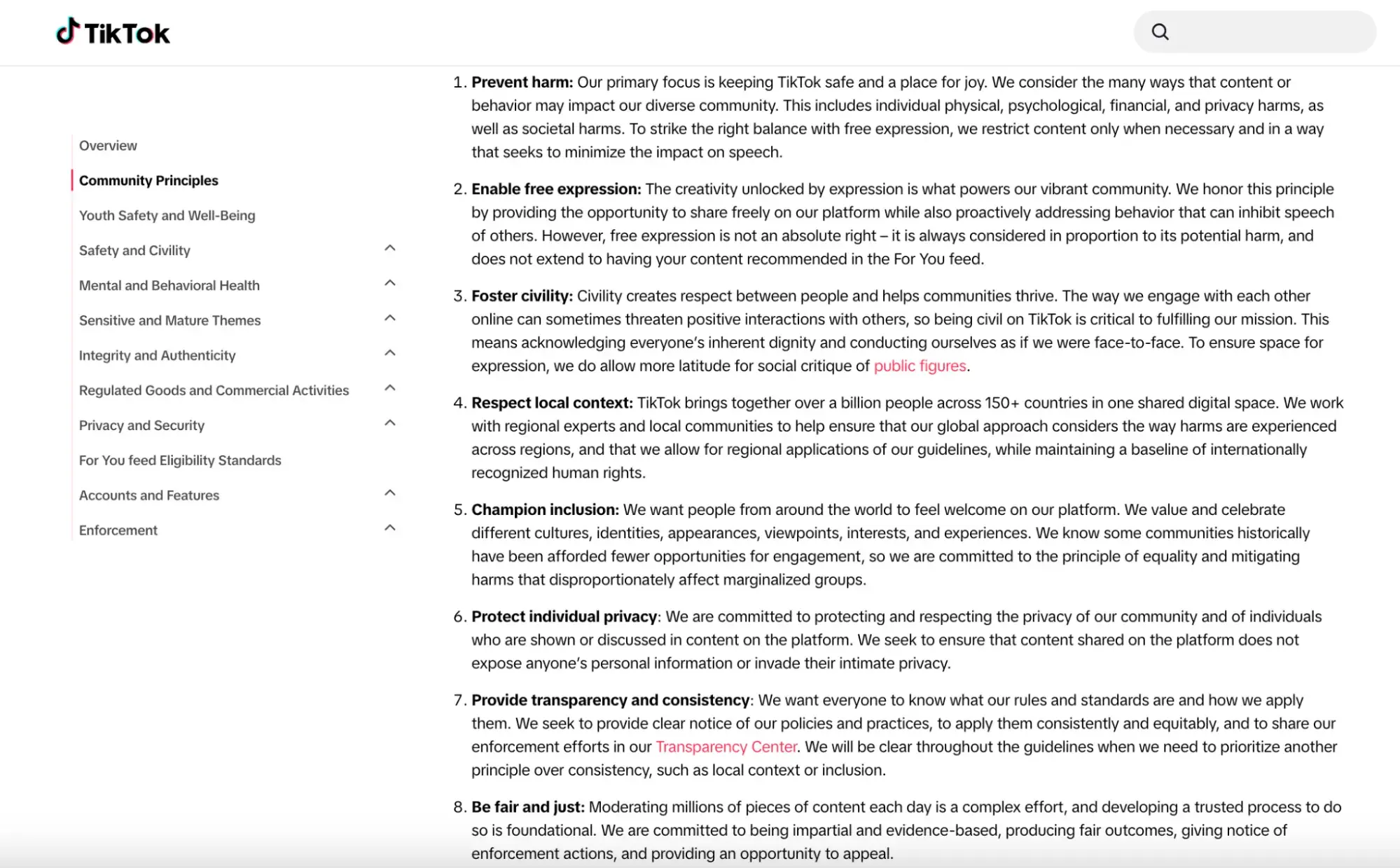
It’s all about creating a safe place for people to interact with each other and your brand. This is easier to accomplish when you outline what that looks like up front.
2. Get your members involved early (and often).
Max Pete, community engagement program manager at Square, says:
“Involve your members early on in the process, and don't stop involving them as you evolve. Always have the ‘build with’ vs. ‘build for’ mentality.”
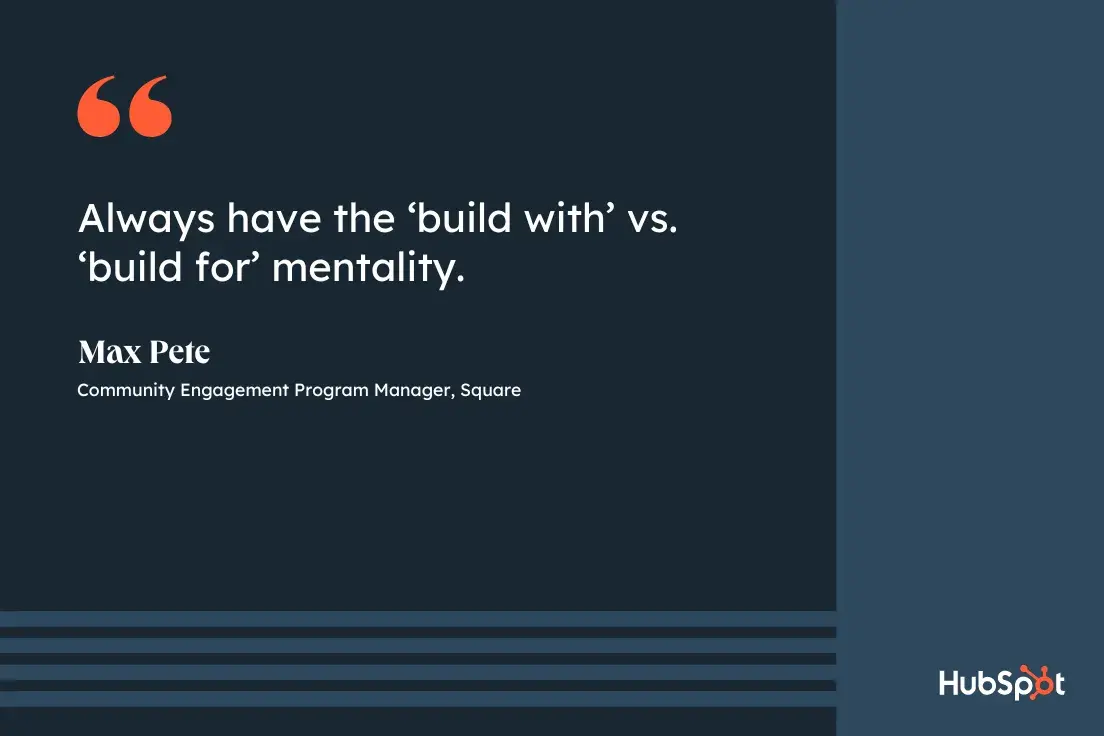
It’s a lot easier for people to invest in something they helped create. And that second part is so important because you want your community to grow with you (and stick around long term).
Collaborate, ask for input, and let your audience show you how they want to engage with your brand.
3. Encourage member-to-member interactions.
Audience interaction is so important, but a community thrives beyond just you and your brand.
As Joe McElligott, Strategy Director at MG Empower, explains:
“Community isn't solely formed through brand-to-consumer interactions. The interactions among consumers themselves are truly significant elements of a strategy, with the brand serving as the platform or facilitator for these engagements.”

If you’re managing a brand community, give your members the opportunity to build relationships among themselves.
For inspo, Scrub Daddy is really good at this. They’ve created a community of promoters who enjoy posting relatable content to their own audiences about Scrub Daddy products.
And that content often gets a lot of traction — like this TikTok below with 374K likes and 1,550+ comments.
A successful community should be able to hold its own. And this will actually help take some of the pressure off of you, too.
If members are empowered to interact with each other, they’re not only relying on you to drive the conversation. Win-win.
4. Recognize, incentivize, and reward participation.
An important part of community management is showing appreciation for your followers. It shows you value their time and commitment to your brand.
There are many ways to recognize and reward participation. Here are a few steps you can take to show you care:
- Send a personal welcome and thank you note to each new member of your community with a token of appreciation for joining.
- Keep track of the most active members and then acknowledge their contributions via special mentions or gifts.
- Ask members what you can do to make their experience a great one, and reward them for their feedback.
A little effort goes a long way.
5. Personalize your engagements (and be human).
I hate receiving generic responses from brands. Especially when I know there’s a human behind the interaction just waiting to be heard.
Don’t get me wrong, canned responses are great and can be super helpful for teams with limited resources. But that doesn’t mean you can’t show a little personality.
Personally, I like to use a conversational tone in posts and replies to show my audience that they’re talking to a real person. I also address people by their names and try to remember details about every interaction.
But there are many other ways to humanize your brand.
Like this second example from Scrub Daddy when they owned up to making a typo in one of their videos (because, well, it happens).
See the first comment below: “Excuse the typo omg 💀”
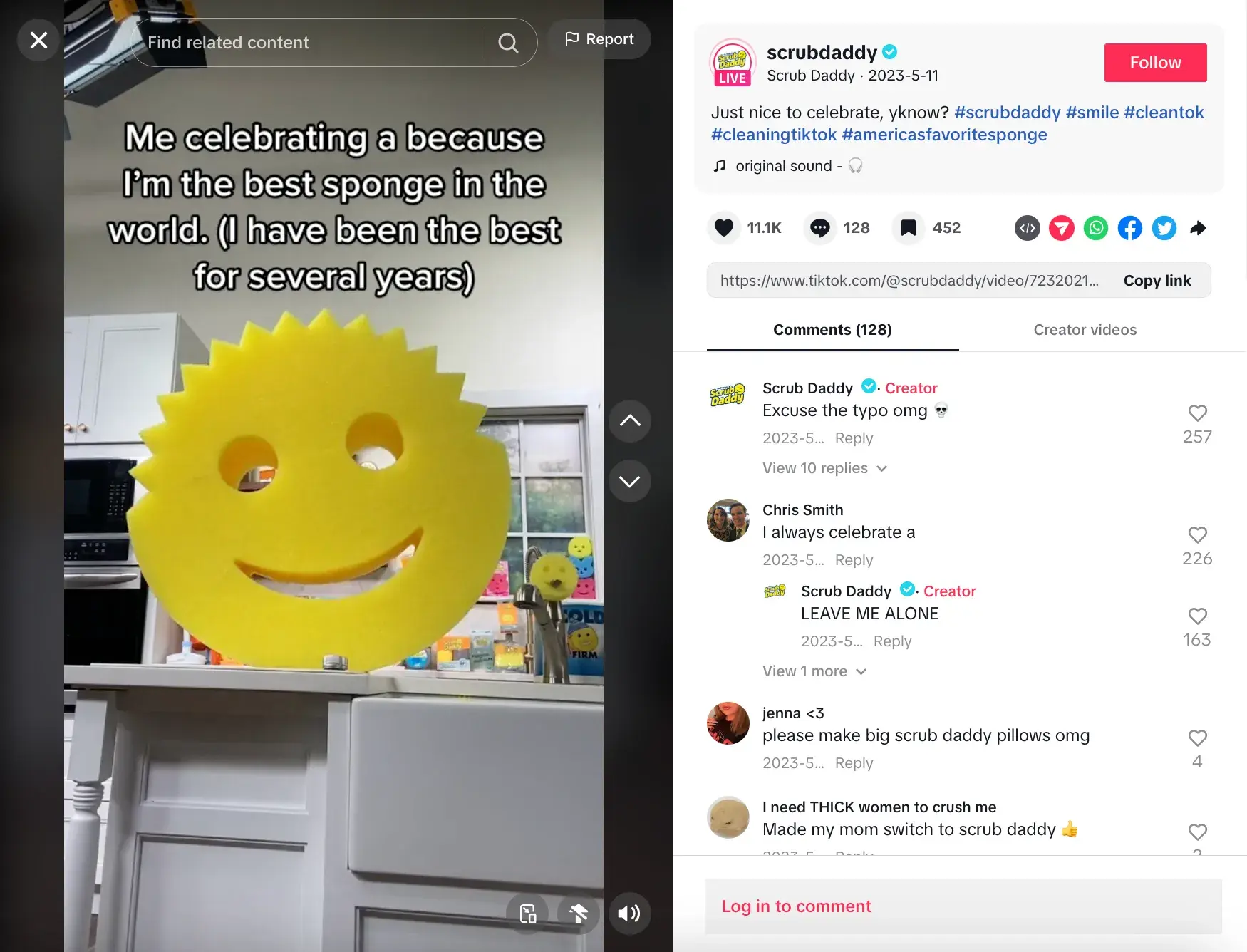
Find a strategy that works for you and be consistent.
6. Stay true to yourself and your brand.
In the spirit of being human, you should also try to be as honest, transparent, and authentic as possible.
Address any negative comments, feedback, or challenges openly and acknowledge mistakes when they happen.
Did you forget to follow up with someone about a product question or concern? Own it, and make things right. Has someone violated your content guidelines? Act swiftly, and acknowledge community concerns.
Being authentic builds trust and can help foster stronger connections with your audience.
7. Use AI and tech to your advantage.
Many community management platforms, including social media, offer features to streamline your workflow. And now that AI is literally everywhere, take advantage of the good things automation has to offer.
You can use social monitoring tools, like HubSpot’s social media management software, to track engagements and respond to comments and messages in real-time.
Or try out some GenAI prompts to help you come up with content ideas related to your audience’s interests.
Use the resources around you to deliver maximum value to your community.
8. Be attentive and respond promptly.
Timeliness is critical in community management.
Make it a priority to address comments, concerns, and questions from your audience as quickly as possible. This shows members you’re active and ready to address their needs.
According to Jan Crewe, a social media community manager at ICUC, responding to incoming comments fast is key for building relationships with your audience.

She says that “this increases the chance of subsequent responses, extending the interaction.” It also allows you to address any pressing issues before they start to snowball.
9. Celebrate milestones with your community.
Your milestones — and those of your community members — are cause for celebration.
For example:
- Did you gain a certain number of followers or members? Shout it from the rooftops.
- Is it the anniversary of your community launch? I’ll bring the cake, you bring the candles.
- One of your members accomplished something big? Let’s all raise a glass!
Sharing moments like these can strengthen the sense of community and deepen the connection people feel to your brand.
10. Maintain your brand voice at all times.
It’s important to keep a consistent brand voice when managing a community.
Your brand voice is what makes your business unique and identifiable to your audience. For example, if your brand is known for being easy-going, this personality should be reflected in all your interactions and content.
(I won’t share another Scrub Daddy example — I think you get the point.)
11. Evolve with the trends.
Community management is constantly evolving. Stay open to learning new ideas and incorporating them into your strategy. You can also expect the best practices on this list to shift as community management trends change.
As a marketer, I try to stay updated on what’s happening across the industry (I’m looking at you The Marketing Millennials) and how those factors affect audience preferences.
I also pay attention to any changes in social media algorithms which ultimately affects how your content is displayed to potential viewers.
This proactive approach allows me to adapt my strategies as needed. And I have a feeling it’ll help you keep your communities engaged and relevant, too.
12. Always be auditing.
Pete is back with one final nugget of advice: “always be auditing.”
He adds, “Community building isn't a one and done type of thing. It takes constant work and is always a work in progress, but that is what makes it fun.”
Your community is like a puppy. You have to feed it, nurture it, pay close attention to it, and invest in it. And if something’s not working, don’t be afraid to take it to the vet … I mean, review your metrics and make improvements.
Do you hear that?
That’s the sound of hundreds … actually … thousands of community advocates engaging with your content and talking about your brand.
I would say good luck, but I already know you’ll handle it like a pro.
Community Management


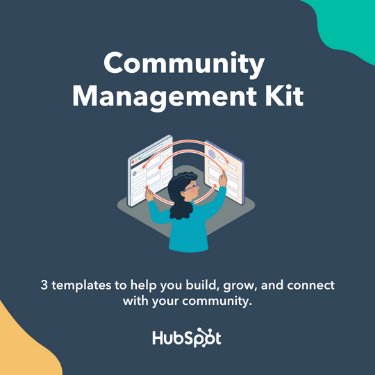
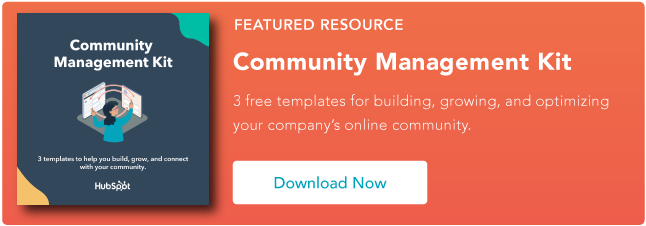



![Experts Share Top Tips for Community Management [+ Examples]](https://53.fs1.hubspotusercontent-na1.net/hubfs/53/ft-community.webp)





